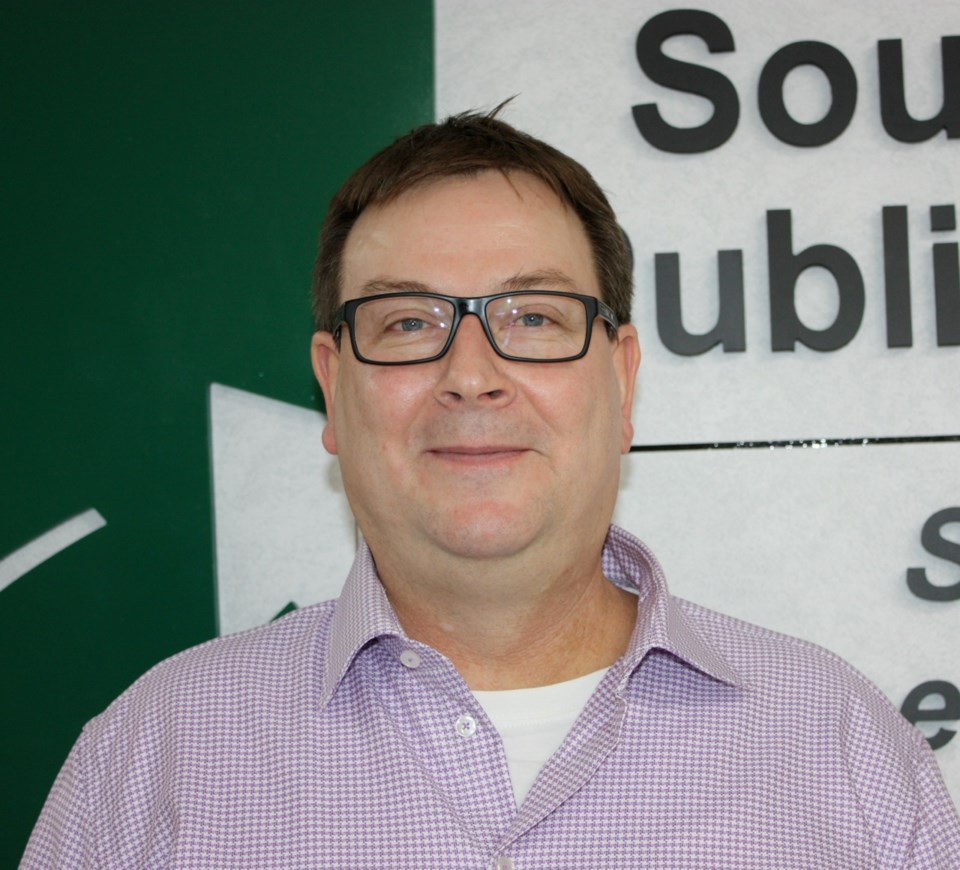Instructional Technology within the South East Cornerstone Public School Division (SECPSD) is a growth industry in this educational world.
Jeff Walters, co-ordinator for the four-person IT team, told the school board members attending the Jan. 15 open business session that two new IT courses would be coming on line next academic year to bolster the already healthy batch of credit courses and programs already implemented in the division schools.
“Grade 10 to 12 credits earned through Cyber Stone Virtual School alone was at 650,” Walters said. “That’s an increase of 57 from the year before.”
Mathematics and agricultural and other vocational credit courses are the most favoured followed by social studies, science and then English language programs.
“We’re here to provide vision and leadership regarding educational technology and global competencies, in other words, 21st Century learning,” he said.
IT supports curriculum development and integration into pedagogy and the classroom. The practitioners collaborate with teachers and students and they have received a huge uptick in student engagement at all grade levels, he said. New teachers are trained to use electronic grade books, division services and other EdTech practices as well as being fully engaged in preparation for the eventual implementation of the MySchoolSask provincial information system.
Cyber Stone currently has 139 students registered for online learning only with all Cornerstone schools also offering online instruction in a variety of courses.
Walters illustrated the growth in acceptance among students by giving the board members a video presentation of Grade 5 and 6 girls who are involved in Girls Who Game, a coding program in partnership with a computer/Internet corporation. That partnership experience went well, he said with a lot of strong, positive feedback from the 10 female participants in the pilot after school project launched in Weyburn that was assisted by teacher Jodi Abel and her corporate partner. That program has now rolled out to Pangman and Carlyle this academic year, Walters added.
“This is good, it’s getting them out of the usual demographic, getting girls engaged,” said trustee Elwood White, while viewing the video.
The use of SeeSaw, a digital portfolio and parent communication application that allows students to show parents and others what they know using photos, videos, drawings, texts, PDFs and links is simple and gets the students sharing with families and nothing is shared without teacher approval, he said. It’s a motivator for the students and engages parents in their children’s learning process.
“You know, before there might have been the usual question and answer with the parent asking the child what they learned that day and the kid simply responding by saying, ‘nothing’ is not the situation today. Now they (the student) is starting the conversation, anxious to show the parent what they’ve done and learned.”
The educational aspects of the game Mine Craft were one example Walters used to indicate the transformation in learning.
A seminar for educators entitled Code, Create, Teach will be conducted in the head office in Weyburn on Jan. 31 he said, and will involve teachers instructing at the Grade 7-9 levels. The seminar will focus on robotics and automation. The automation portion will also be opened for teachers instructing students from Grade 2-12.
Teachers’ posts and family visits on SeeSaw have grown by huge numbers over the past year, Walters said. During the past 28 days, there had been 8,516 posts added to SeeSaw and 14,637 family visits.
Near the end of his presentation, Walters spoke briefly about instant language translation services now available on traditional cell phone apps.
“You speak into it in your language and the recipient picks it up as a text on his or her phone, in their language,” he said. The service covers instant translation for 47 languages.
It was used as just another example of the rapid growth in technology that is being accommodated and advanced in today’s Saskatchewan schools.




